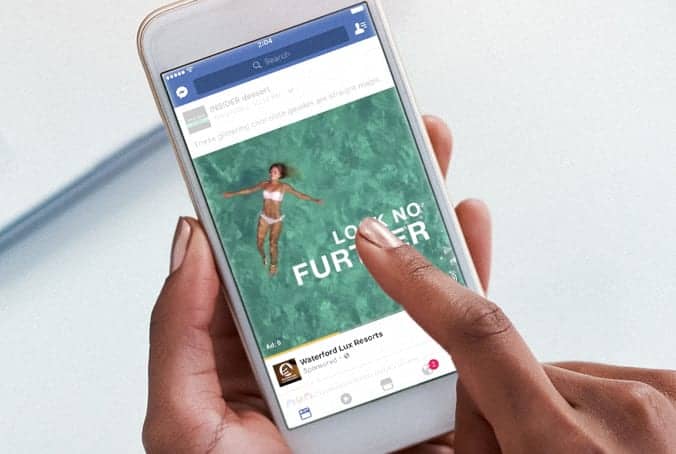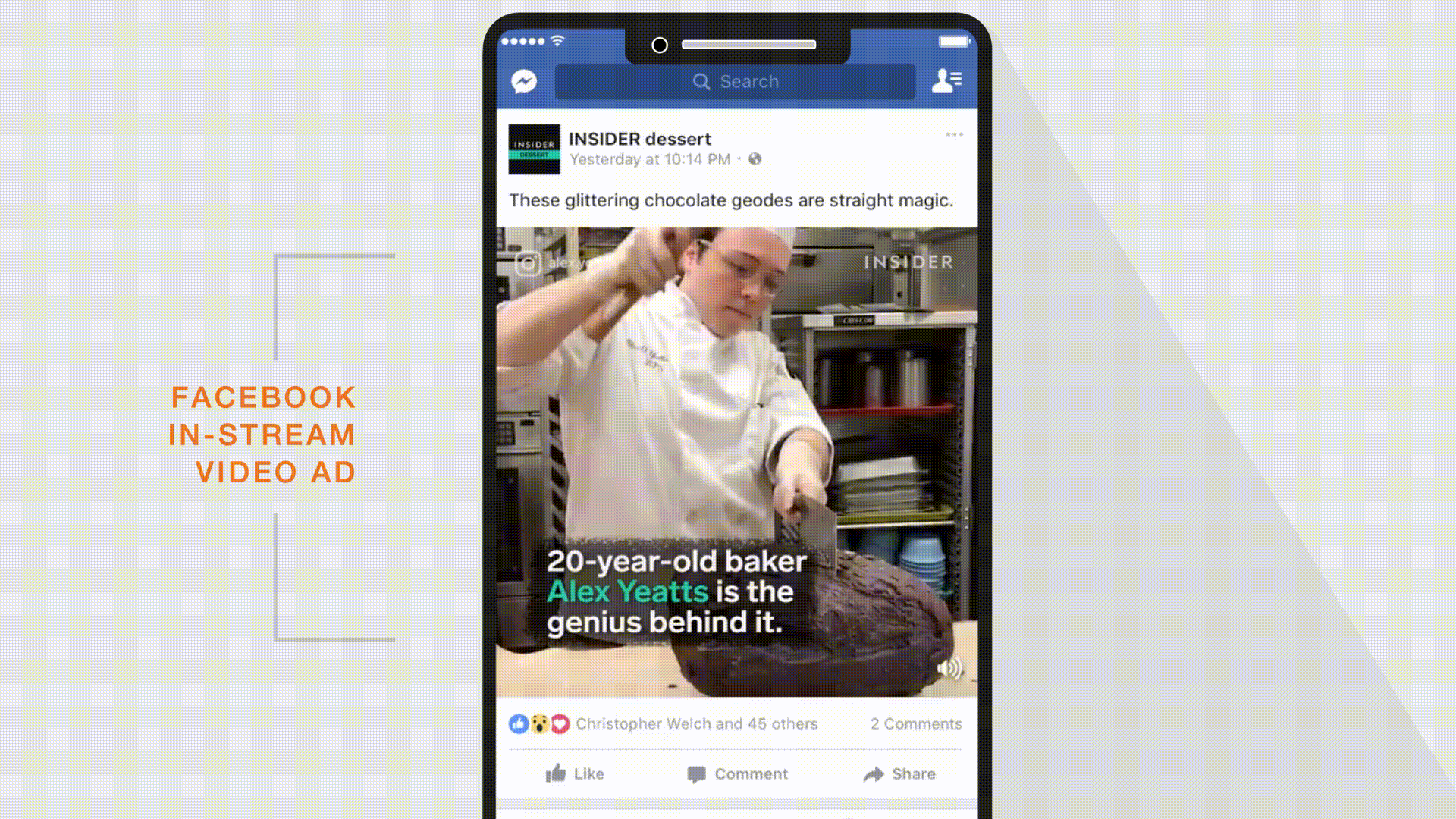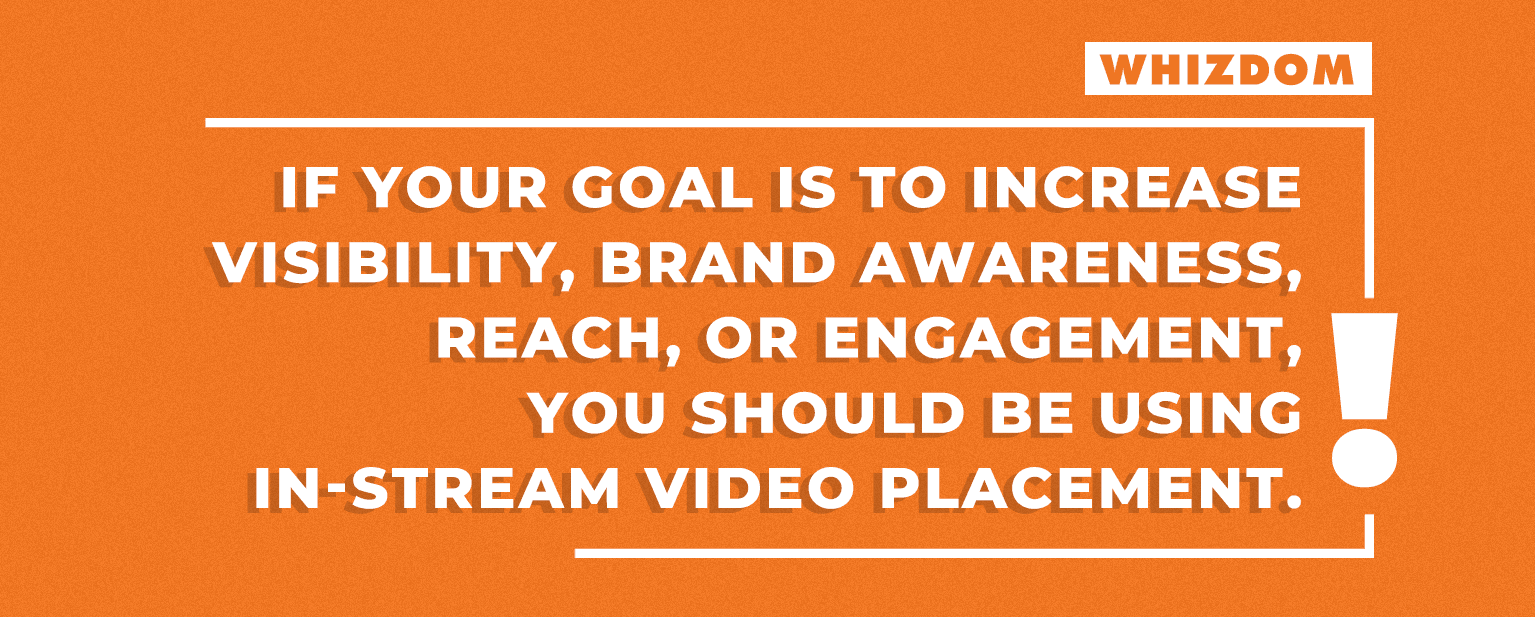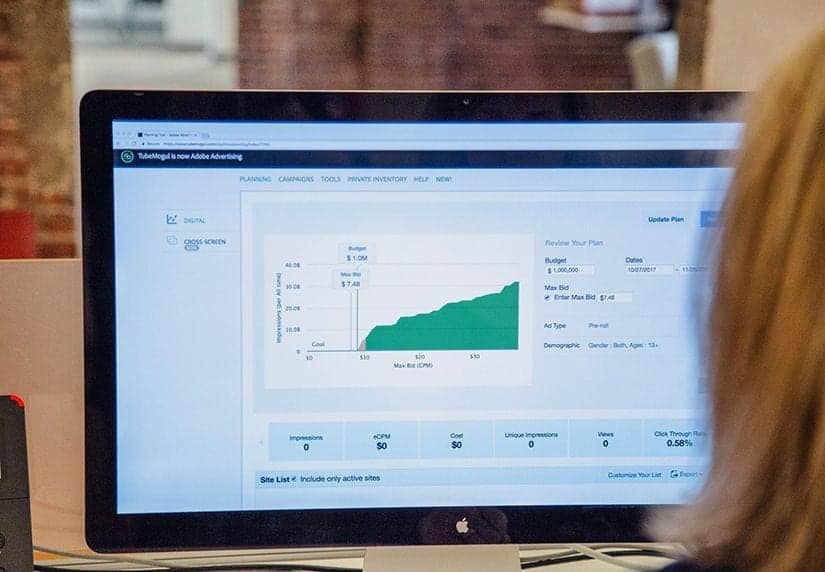Would You Want to Watch Your Facebook Ad? How to Make Your Video Stand Out
Nervous that your brand’s Facebook videos are not getting the attention you’d like? You should be. The hard fact is, you have exactly 2.5 seconds to...

With over 100 million hours of video being watched on Facebook every day, people are consuming video in various mediums across many devices, but most are moving away from snackable, short form content and opting for a longer, more gourmet video experience. With long form videos representing 55% of viewing time on smartphones, Facebook is now allowing advertisers the opportunity to leverage the attention of these leaned back, tuned-in viewers with In-Stream video ad placements. These Facebook video ads are very similar to mid-roll ads on YouTube or Twitch. You may have already noticed these videos yourself, as Facebook has been testing them on content that is 90 seconds or longer for the last few months.

Facebook’s In-Stream video ads break through long form video content by being placed at least 20 seconds into the video in order to ensure that viewers are actively engaged. Slightly different than their video counterparts running solely in the Facebook newsfeed, In-Stream videos are between 5-15 seconds long and are usually played with the sound on, giving more allowance for ad creativity. Add in their prediction that 75% of all mobile content will be video by 2020, and it’s plain to see Facebook is offering brands a unique advertising opportunity.
In order to give advertisers more control over the delivery of content, Facebook allows brands the option to choose Placement Controls, Category Blocking, a Pre-Campaign Publish List, and an App Block List. Advertisers also now have the ability to extend their reach by running their content across Facebook publisher’s apps and sites on Audience Network. These publishers include (but are not limited to) Time, Inc., Vice, and Univision. Although publisher reporting is not yet available, Facebook knows there is a need for advertisers to see how their content is performing across all placements, and they are currently working on creating a system for reporting from their partnered publishers.
Real Talk: In-stream videos are Facebook’s answer to advertisers’ complaints about disengaged viewers. They are effectively replicating the television experience by forcing viewers to watch in-stream ads if they want to be able to view a piece of content in its entirety. Welcome to interruption-based marketing. If we’ve learned anything from the digital consumer, it is that they do not want to sacrifice their experience. They want to consume what they want, when they want, how they want. If your goal is to increase visibility, brand awareness, reach, or engagement, you should be using in-stream video placement. To truly engage consumers, Facebook should be designing ad formats that flow – or dare we say, even enhance – the user experience, like their other ad products. This is a departure from their typical advertising options and, in our opinion, a bad one for consumers. But, will the draw of Facebook be powerful enough to keep users’ frustration at bay?

Facebook, and its advertising revenue streams, are not going anywhere. The real question marketers should be asking themselves: will this interruption-style format negatively impact brand perception? Brands need to be careful. Advertisers shouldn’t jump on the bandwagon without taking some important steps to avoid risking backlash or negative consumer perception.
We’ll have to wait to see how the in-stream ad format will interact with Facebook’s “Watch” video platform.. Until then, if you’re looking to set your brand up for success with Facebook – drop us a line!

Nervous that your brand’s Facebook videos are not getting the attention you’d like? You should be. The hard fact is, you have exactly 2.5 seconds to...

Over the last couple of months, rumors have been circulating about Facebook’s development of a video platform designed to compete with major...

Video content is expensive to create, and the media and distribution behind it can often mean the success or failure of a campaign. We recently...